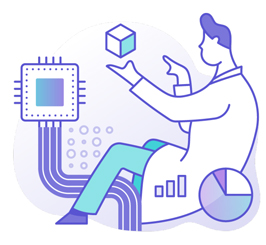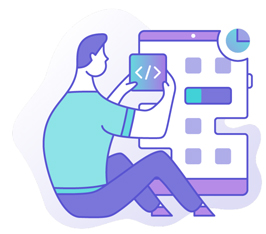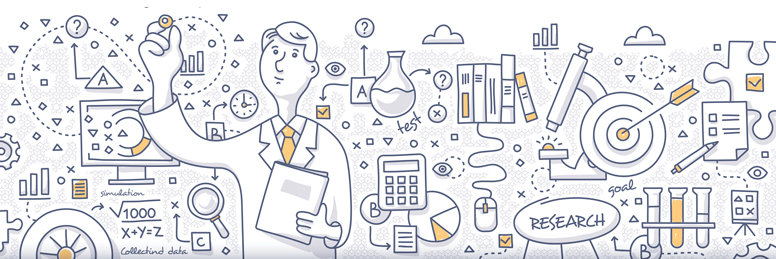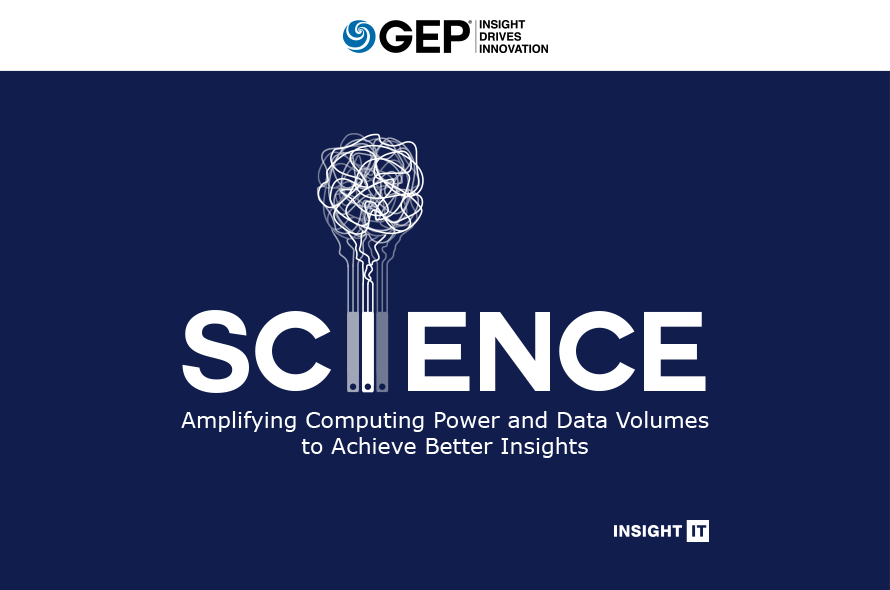The spotlight on data science has grown brighter as enterprises increasingly realize the importance and value of data. Advancements in data science, machine learning/deep learning, and eventually quantum computing are going to compel CIOs and C-suite executives to radically rethink their data and technology strategies.
Sound a bit daunting? This new Insight IT paper from GEP — Science: Amplifying Computing Power and Data Volumes to Achieve Better Insights — is a starting point, explaining what CIOs and IT professionals can expect from the future of data science and technology.
Why Read It:
- The advancements in data science that can help “fish” data lakes for new insights
- How deep learning can enable algorithms to learn, adapt, and evolve to find better answers
- Quantum computing’s potential to disrupt everything by solving problems thought unsolvable
Read to find out what’s next for data and computing and how it can be leveraged across the business, including procurement and supply chain.
Data science is a fast-evolving, cross-disciplinary field that presents an enormous range of possibilities for deriving value from digitized information. Advancements in data science will increase our ability to quickly derive actionable insights from data, both structured — such as that contained in traditional databases — and unstructured (or not yet structured, such as that residing in data lakes).
For advancements in data science to deliver value, three requirements have to be fulfilled:
- Complex machine learning algorithms (AI);
- Access to huge volumes of data (data lakes); and
- The computing power necessary to run that volume of data through evolving algorithms in real time
If data management is about how we acquire, store and access data, analytical capabilities determine how we can ask questions of that data and how the answers will be presented to us. Data science occupies the space between data management and analytics, where we train AI’s core machine learning and cognitive abilities to interpret data. All of these elements need to align with one overarching business vision in order to enable the transition from data to meaning.

The world cannot be understood without numbers. But the world cannot be understood with numbers alone.1
– Hans Rosling, Swedish physician, academic, statistician, and public speaker
Data Science and Deep Learning
Advances in data science provide additional means for us to “fish” data lakes for meaning. We can increasingly combine statistical models, classical analysis techniques, and machine learning to create what is known as “deep learning,” or the use of machine learning to replicate how a human expert might process new information in his/her field.

Rather than simply adding more data to an existing data set, deep learning changes the analytical models used by the machine to process new information. Unlike a deterministic, task-specific type of automation, deep learning allows systems to learn, adapt and evolve. Data science and deep learning have a massive role to play in health care, for example, modeling drugs and biological systems. In the context of supply chains, they can model hugely complex systems with a view to predicting, and in some cases preventing, a specific outcome.
Scaling Up in Computing Power
The almost immeasurable complexities involved with global supply chain scenarios will require more than just adaptive algorithms and access to a wide range of data sources. They will require the support of advancements in areas like quantum computing. Once we combine huge volumes of data and the analytical requirements of today’s businesses, the power required to deliver insight on a useable timeline will be immense. The upside of overcoming these challenges, however, is large-scale disruption of the type that can completely reshape a given industry.

There haven’t been huge advances in how machine learning algorithms work for decades. What has changed is the volume of data that can be managed in a single set and the computing power that can be cost-effectively thrown at it.
While many people are focused on the next- generation capabilities such as AI, cognitive computing, etc., the real advancement is the power available to run complex algorithms quickly on a sufficient volume of data in order to deliver a meaningful outcome. AI is clever (and easier to demonstrate than raw computing power), but it’s the computing power to run many models at once that makes AI seem “intelligent.”
Quantum Computing: Challenging the Status Quo
Quantum computing is a much-hyped area of research and innovation. And while it doesn’t have immediate relevance to procurement and supply chain today, once production quantum computers are available, they will radically alter the world. For that reason, everyone in an IT leadership or decision-making position needs to be informed about them.
Moore’s law, which predicted that the number of transistors in a dense integrated circuit would double about every two years, still stands — with one modification. With today’s increased transistor speed, the doubling period has been reduced to 18 months. That said, the promise of quantum computing introduces a completely different type of computational capability. A quantum computer could not only solve problems more quickly than current computers, but would solve problems that are effectively impossible using current computer architectures.
It’s always difficult to see past the hype, especially when we do not expect to see any change in the immediate future. When the anticipated changes come via data science, the result will be nothing short of revolutionary. We can have no expectations about the sustainability of the status quo in the face of a leap forward of this magnitude.
Key Takeaways
- Advancements in data science will make it possible to combine vast amounts of structured and unstructured data to run complex scenarios so that decision makers can take action on the findings in real time.
- Deep learning builds on today’s machine learning capabilities by allowing computer algorithms to improve and evolve rather than just incorporating new data sets into unchanged analytics.
- Quantum computing, which is not yet available in production, has the potential to profoundly disrupt the status quo — with a retroactive impact on encryption.

Why It Matters in Procurement and Supply Chain
The progressive analytical support enabled by advancements in data science will change procurement’s relationship with technology in two ways:
- Allowing one analytical resource to fuel multiple stages of spend management maturity rather than “disposable,” single-objective-driven systems
- Delivering sustained value by providing insights far more complex than traditional supplier fragmentation or categorized spend
References
- Hans Rosling, Factfulness: Ten Reasons We’re Wrong About the World--and Why Things Are Better Than You Think (New York: Flatiron, 2008) p. 128

